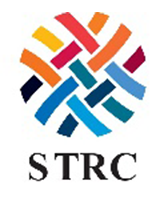While circularity has become a dominant framework in the textile industry it often falls short in practice. A promise to close loops, reduce waste, and reconcile production with environmental limits. It offers the comforting idea that consumption can continue, just differently. Yet after years as a global megatrend, the gap between vision and reality remains wide. Action has lagged, and impact has fallen short.
Category: Abstracts 2025
State of Textile Recycling: Challenges, Opportunities, and the Path Forward
Textile waste is a growing challenge, yet its recyclability remains limited due to complex material compositions, market constraints, and infrastructure gaps. In this session, we’ll examine the scale of the challenge, where textile waste goes once discarded, and the critical distinction between discard and disposal.
Updates on Recycling and Repurposing Cotton Textile Waste: Cotton to Sugar Project
This presentation will review and update the efforts by Cotton Incorporated to obtain glucose from cotton textile waste. Cotton fiber is nearly pure cellulose, a natural polymer composed of many glucose units. Research has shown that glucose can be readily obtained from cotton textile waste through enzymatic hydrolysis.
Custom Circularity Models and Understanding the Process
In this presentation, “Custom Circularity Models and Understanding the Process,” we will explore the importance of developing tailored circularity models within the textile industry. We will discuss the process of designing and implementing these custom solutions, highlighting the unique challenges and opportunities they present. By delving into the need for personalized approaches, I will explain why a one-size-fits-all solution can be difficult and how custom circularity models can drive greater sustainability, efficiency, and innovation in the industry.
